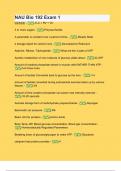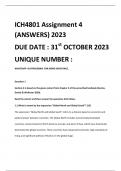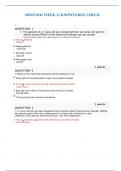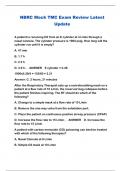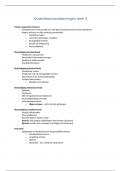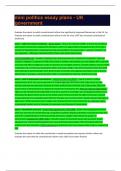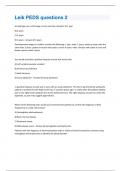Exam (elaborations)
COMD 5070 Exam 3 With Complete Solution
- Course
- Institution
Prosody and Suprasegmental Properties - ANSWER-The production of speech involves more than the articulation of consonants and vowels Coarticulation - ANSWER-when phonemes are altered because of their neighbors ex. lip position for /s/ when we produce spoon vs. spy ex. the "a" in "bad" and "man...
[Show more]




